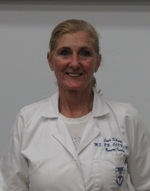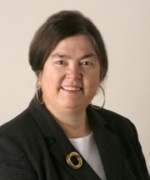
Alarm Fatigue Pilot Shows More Technology Isn't Always the Answer
A cacophony of beeps, tones, buzzers and other annoying sounds permeates some hospital units, making it difficult for patients to rest. Meanwhile, staff members become so used to the noise and the number of false alerts from equipment they often just tune it out, a problem called “alarm fatigue,” which has led to patient deaths, a Joint Commission Sentinel Event Alert and a new 2014 National Patient Safety Goal.
“When you have a high frequency of alarms, they don’t pop out as quickly, and that’s stressful,” said Deborah Whalen, MSN, APRN, ANP-BC, clinical service manager and cardiology nurse practitioner at Boston Medical Center (BMC). Whalen recently co-authored a paper describing BMC’s successful reduction of audible alarms as a way to combat alarm fatigue and improve patient safety.
A BMC interdisciplinary task force conducted an extensive literature review before implementing a cost-effective approach during a six-week pilot program on a cardiology unit. They reset parameters on the alarms to “crisis” levels, such as heart rate below 45 bpm or above 130 bpm, and electronic order sets for providers to set parameters for common arrhythmias. All alarms are now actionable.
“It was a big cultural shift,” said James Piepenbrink, director of clinical engineering at BMC and a study co-author, who attributes much of the success to the interdisciplinary clinician team and leadership support. “We proved the system works, and clinically we have had no adverse outcomes.”
The pilot resulted in an 89 percent reduction in the average number of daily audible alarms. The largest drop occurred to changes in monitors for bradycardia, tachycardia and heart rate parameter limits.
Noise levels fell to 72 decibels from 90 decibels pre-pilot. Patient and clinician satisfaction increased. Nurses reported spending more time with patients. No adverse cardiac events related to missed alarms occurred and code blue events decreased by half.
All of these benefits occurred without additional technology or financial resources.
“While some hospitals are looking to add technology to combat this issue, BMC’s approach demonstrates the opportunity for clinicians to interact with current alarm systems more effectively to decrease clinical alarm fatigue while simultaneously capturing and displaying all important alarms,” said Piepenbrink, adding that he is proud not to have added on more technology but that the team addressed the root of the problem.
“We engaged the frontline staff to do this, and we recognize empowering the staff can drive a solution that has made them incredibly happy,” Whalen said. “Our patients are much safer.”
The hospital has since implemented this program and standardized alarms on all of its inpatient medical–surgical units. The Journal of Cardiovascular Nursing published the findings, which can serve as a model for other hospitals.
“They can use what we did as a guidepost, because we found it successful,” Whalen said. “My advice would be to start with an interdisciplinary team, and then when you decide what to do, then do a pilot.”
The ECRI Institute listed alarm fatigue as the No. 1 health technology hazard for 2014, and ECRI vice president of health technology evaluation and safety, praised the BMC initiative in a letter to the National Quality Forum.
“While most institutions have addressed alarm fatigue by applying resources in order to monitor, intervene and fine-tune the response, the [BMC] Telemetry Task Force project was brilliantly simple, yet it required creative insight into the problem,” Keller said. “Once the project was implemented, the team achieved significant alarm reductions and increases in patient and staff safety and satisfaction. The work that the task force initiated, piloted and implemented at Boston Medical Center has the potential to markedly change the way that telemetry monitoring is performed nationwide.”
The Joint Commission issued a Sentinel Event Alert in 2013, citing 80 alarm-related deaths from January 2009 through June 2012.
“Alarm fatigue and management of alarms are important safety issues that we must confront,” said Ana McKee, MD, executive vice president and chief medical officer of The Joint Commission in a statement. “The work of Boston Medical Center and numerous others who are trying to find solutions to this very serious patient safety issue should be applauded. By making alarm safety a priority, lives can be saved.”

Ramon Lavandero, RN, MA, MSN, FAAN, attributes alarm fatigue to an increase in technology.
The first phase of the Joint Commission Alarm Safety National Patient Safety Goal began January 1, 2014, and raises awareness of risks associated with alarms. The second phase adds requirements to mitigate the risks.
“It’s no surprise that alarm management has escalated to the level where The Joint Commission found it necessary to make it a national patient safety goal for 2014,” said Ramon Lavandero, RN, MA, MSN, FAAN, senior director, American Association of Critical-Care Nurses (AACN) and clinical associate professor at Yale University School of Nursing in New Haven, Conn. “The problem matches the steep and steady rise in the use of technology across all of healthcare, from the most complex critical care unit to a patient’s home.”
AACN has issued a practice alert on alarm management. Lavendero reported that every player contributes to the problem--especially manufacturers, healthcare delivery organizations and clinicians.
“Manufacturers continue to develop better technological mouse traps to support clinicians in achieving optimal patient outcomes,” he said. “The intentions are honorable, but it's usually done in isolation because of competitive motives. Devices don’t speak to each other and prototypes generally reach clinicians long after the research and design train has left the station. At that point, it's a done deal and only fine-tuning is possible.”
Lavendero indicated an array of evidence-based solutions exist, and, if applied appropriately to a healthcare delivery organization’s unique needs, will work.
“So the focus needs to be on finding and trying out those good solutions,” he said.
In addition to the BMC initiative, other institutions have found success with various measures, such as prepping the skin before placing electrodes and changing them daily, which BNC implemented.

Linda D’Antonio, MSN, RN, CNL, recommended two nurses check the alarm settings every four hours.
Nurses must keep alarms top of mind, with two people checking the monitor every four hours and alarm competencies should be checked annually, recommended Linda D’Antonio, MSN, RN, CNL, senior faculty associate at the College of Nursing at Seton Hall University in South Orange, N.J.
Wendie A. Howland, MN, RN-BC, CRRN, CCM, CNLCP, LNCC, principal of Howland Health Consulting in Pocasset, Mass., attributes much of the alarm fatigue issue to poor staffing, suggesting that more nurses immediately available to address an alarm would shorten its duration.
“More nurses would solve or ameliorate so many problems in patient care and this is just one of them,” Howland concluded.

Wendie A. Howland, MN, RN-BC, CRRN, CCM, CNLCP, LNCC, suggested adding more nurses to address alarm fatigue.
Lavendero suggested the hospital-level solution is happening faster in organizations with healthy work environments.
“Appropriate staffing is actually a hallmark of a healthy work environment,” Lavendero said. “But appropriate staffing is often misunderstood and thought to be a numbers game. It’s not. Appropriate staffing means having the right people with the right knowledge and skills to meet a patient’s needs at the right time.”
On Feb. 13, 2014, AACN is offering a free 30-minute webinar on alarm management at the request of bedside clinicians. Maria Cvach, RN, DNP, CCRN, assistant director of nursing at the John Hopkins Hospital and chair of the Clinical Alarms Steering Committee of the Healthcare Technology Safety Institute, will field audience questions during the live program.
Joint Commission Alarm Safety National Patient Safety Goal
“NPSG.06.01.01: Improve the safety of clinical alarm systems.
EP 1: As of July 1, 2014, leaders establish alarm system safety as a hospital priority.
EP 2: During 2014, identify the most important alarm signals to manage based on the following:
• Input from the medical staff and clinical departments
• Risk to patients if the alarm signal is not attended to or if it malfunctions
• Whether specific alarm signals are needed or unnecessarily contribute to alarm noise and alarm fatigue
• Potential for patient harm based on internal incident history
• Published best practices and guidelines
(For more information on managing medical equipment risks, refer to Standard EC.02.04.01.)
EP 3: As of January 1, 2016, establish policies and procedures for managing the alarms identified in EP 2 above that, at a minimum, address the following:
• Clinically appropriate settings for alarm signals
• When alarm signals can be disabled
• When alarm parameters can be changed
• Who in the organization has the authority to set alarm parameters
• Who in the organization has the authority to change alarm parameters
• Who in the organization has the authority to set alarm parameters to “off”
• Monitoring and responding to alarm signals
• Checking individual alarm signals for accurate settings, proper operation, and detectability
(For more information, refer to Standard EC.02.04.03)
EP 4: As of January 1, 2016, educate staff and licensed independent practitioners about the purpose and proper operation of alarm systems for which they are responsible.”
Source: R3 Report ı Requirement, Rationale, Reference, A complimentary publication of The Joint Commission. Issue 5, December 11, 2013.
© 2014. AMN Healthcare, Inc. All Rights Reserved.


